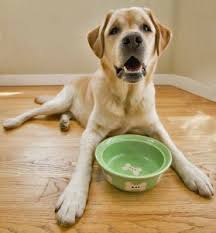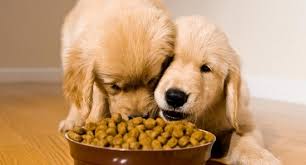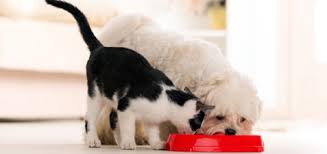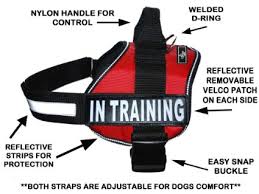When it comes to training your dog, you”ll find that some dogs will perform easily, requiring a minimal amount of effort on your part. Some dogs only need a little bit of encouragement from a small bit of food or from a favorite toy to perform the desired task.

Other dogs may be a little less accommodating, which can lead to some frustrations during training. Some dogs will train more slowly, seeming to have a mind of their own, acting as if their going to do what they want on their own time schedule. You may have to appeal to this type of dogs food drive more often to achieve success in your training.

Understanding Food Drive
A dog’s food drive is a measurement of its desire to eat. Different breeds of dog will have different levels of food drive, and even within a breed you will find individual dogs with different levels.
High Food Drive

A dog that has a high food drive will attempt to eat as much food as possible at mealtime. If you have multiple dogs in your home, the dog with the high food drive may eat all of it’s food and then attempt to eat any food the other dogs have left in their bowls, for example. This type of dog can be easier to train, as it”ll be motivated to learn tasks through it’s desire for food.
 Low Food Drive
Low Food Drive
A dog with a low food drive will be picky at meal time, and it may not really seem to enjoy it’s food much. When you attempt to give the dog a treat, it might not grab the treat immediately. And this type of dog may be unwilling to perform training tasks simply because of the reward of a treat.
Try using higher value treat rewards with this type of dog. Don’t expect your dog to work for treats he receives on a daily basis for free. Why would he want to work for something if he doesn’t have to? Offer your dog savory bites of turkey hot dog, grilled chicken or beef or string cheese. Cut the treats up to the the size of your fingernail, don’t give big chunks, give smaller, bite size pieces according to your dogs size.
Dealing With High Food Drive Dogs

It’s important to keep an eye on a dog with high food drive at meal time, as this type of dog may end up overeating, leading to problems such as vomiting. Don’t let the dog find other sources of food. Cat food can be especially bad for a dog, leading to excessive weight gain.
When training a dog with a high food drive, you have to be careful that you don’t overdo the treats during training. For simple commands, you could end up completing the task a dozen times in a few minutes, and if you provide a treat each time, you may overfeed the dog.
When I train with treats, I will occasionally use the dog’s food as a reward. Instead of feeding the dog’s meal in his bowl, I will train during mealtime and use that food for the meal as his training reward. Or, if I am planning on using higher value treats, I will cut back substantially on his dog food to avoid overfeeding which will lead to weight gain.
Dealing With Low Food Drive Dogs
While some people may give up on training a dog with low food drive labeling the dog as unintelligent, you must have some patience with this type of dog. It may take quite a bit of experimenting, but you probably can find something that will motivate the dog, even if it’s not food related.
Make It A Game
Consider motivating the dog with a low food drive by appealing to the dog’s curiosity. Place the treat in a container and let the dog hear the food rattling inside. Let the dog chase the container around the room a bit before giving it a command.Once it obeys the command, open the container and allow the dog to have the treat, which it may be more motivated to eat now, thanks to it’s initial curiosity.
 Toy: Some dogs will prefer a toy to food when it comes to motivation, listening intently to the trainer as long as the toy is in it’s view. Retrievers may follow this type of training method for a tennis ball, for example.
Toy: Some dogs will prefer a toy to food when it comes to motivation, listening intently to the trainer as long as the toy is in it’s view. Retrievers may follow this type of training method for a tennis ball, for example.
Noise: Some dog trainers will use a clicker or other type of noise to gain the dog’s attention. Often times though, the trainer will train the dog initially to associate the clicker with a treat, and eventually the dog responds to the noise instead of the treat, so this method may not work well with a low food drive dog. You can however, may a strange, interesting noise to get your dog to look at and pay attention to you, which will make training easier. You can’t teach your dog anything if he is not paying attention to you.

Uniform: Some breeds just wan to work. The anticipation of going to work as a volunteer or performing a task may be enough to motivate some dogs during training. Some types of dog will wear a vest or a particular collar when performing work, and sometimes simply putting on the dogs vest or collar will cause it to become motivated to train. The dog will almost seem to change it’s personality and attitude when wearing this uniform, because it knows it’s now time to work.
Training a dog with low food drive can be frustrating at times. But the time you spend working with this dog will result in a very satisfying reward for both of you, once you find the type of training motivation that works!
Amber Kingsley






